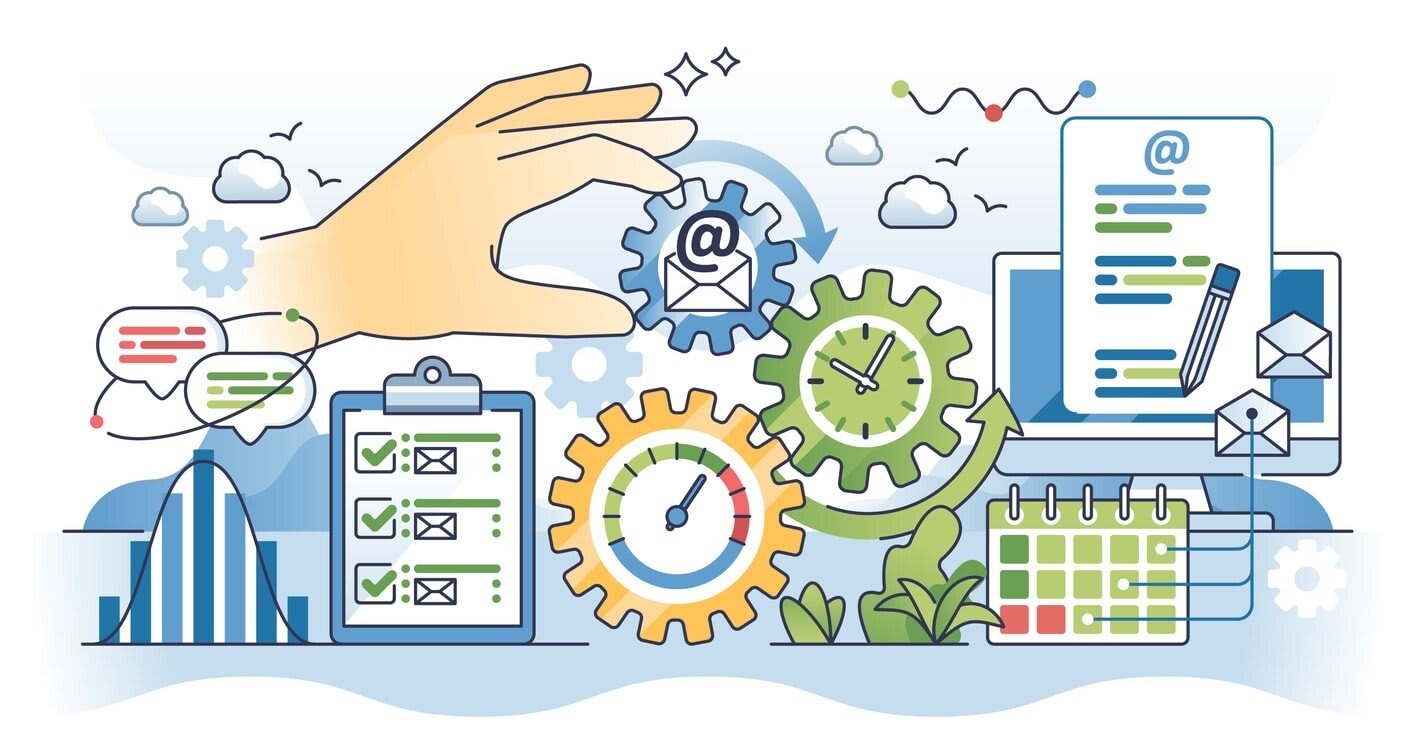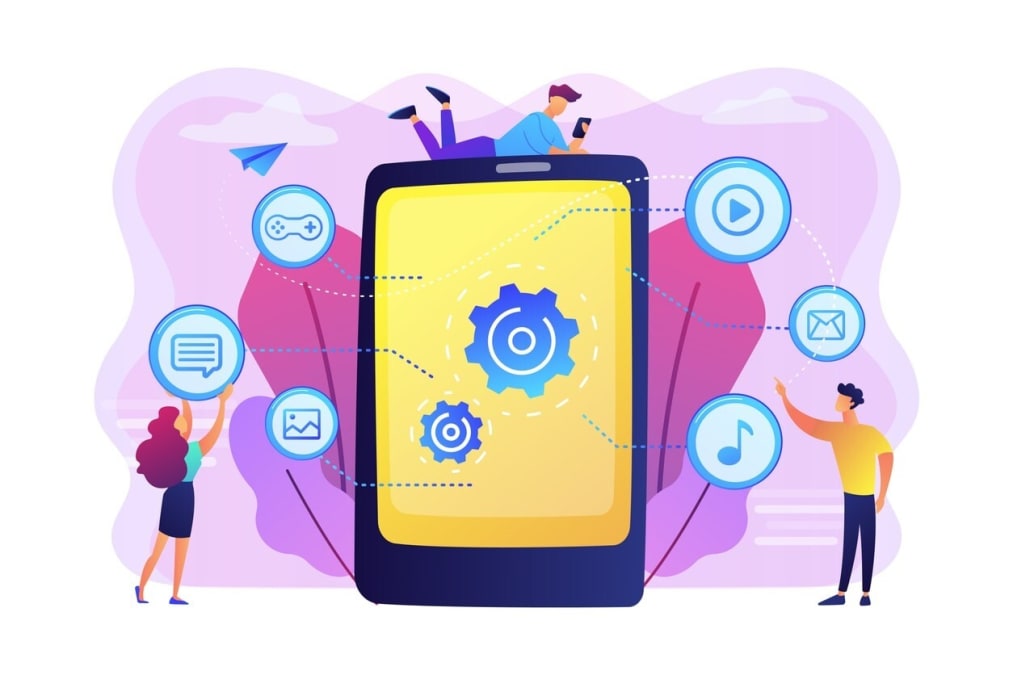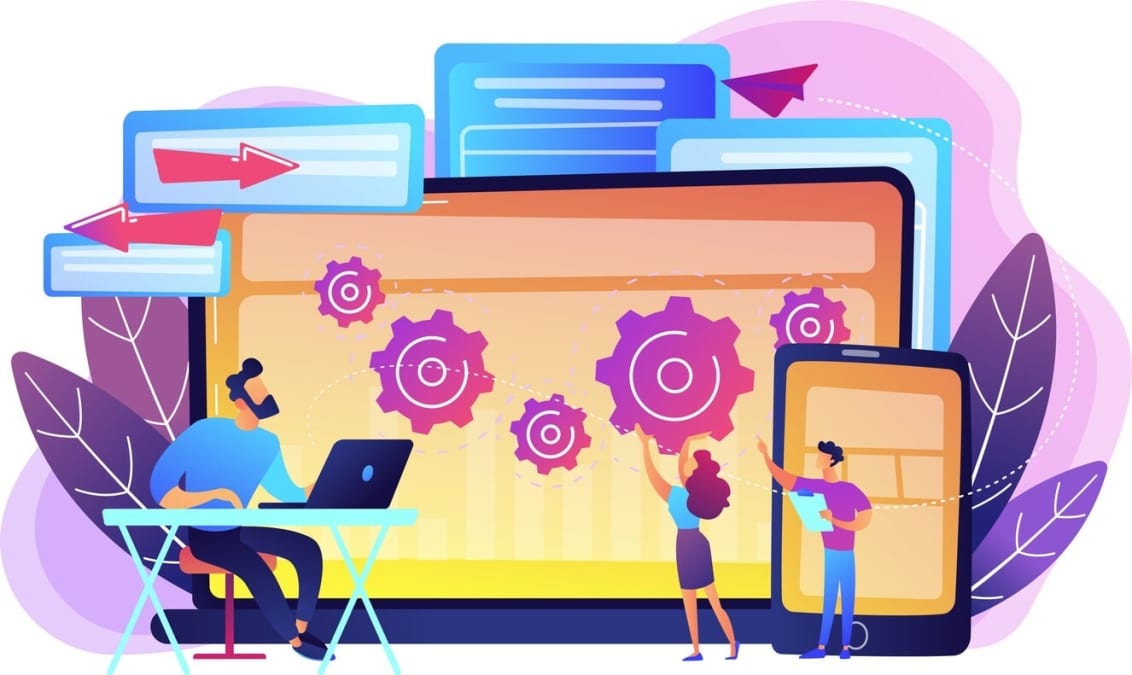Asynchronous communication is when messages are exchanged without requiring an immediate response. This approach is crucial for remote work and collaboration across time zones, offering flexibility and reducing stress. This article will explain what asynchronous communication is, its benefits, popular tools, and best practices to make it work effectively for you.
Key Takeaways
- Asynchronous communication allows for message exchanges without the need for immediate responses, fostering thoughtful interactions and enhancing productivity, especially in remote work settings.
- Key features of asynchronous communication include flexibility, message storage, and reduced interruptions, which contribute to improved job satisfaction and efficient workflows.
- Despite its benefits, challenges such as delayed feedback and miscommunication can arise; implementing best practices like clear messaging and established response times is crucial for effective asynchronous communication.
Understanding Asynchronous Communication

Asynchronous communication refers to the exchange of messages without requiring an immediate response. Unlike synchronous communication, which occurs in real time and demands instant feedback, asynchronous communication allows for a delay between sending and receiving messages. This delay means that individuals can process information and respond thoughtfully, enhancing the quality of interactions.
One of the hallmarks of asynchronous communication is its support for thorough documentation. Written records of conversations are maintained, which aids in reference and transparency. This is particularly beneficial in a workplace setting, where detailed documentation can streamline communication processes and ensure clarity.
Because asynchronous communication does not require participants to be present at the same time, it fosters flexibility. Team members can communicate on their schedules, making it an ideal method for remote work environments. This flexibility not only enhances productivity but also reduces stress, as employees can respond when they are most prepared. Moreover, the nature of asynchronous communication encourages clear and concise messaging, reducing impulsive responses and promoting thoughtful analysis.
In essence, asynchronous work offers a way to balance work and personal life more effectively, making it a powerful tool for modern workplace communication. Organizations that facilitate asynchronous communication often see significant improvements in productivity and outcomes.
Key Features of Asynchronous Communication
Asynchronous communication is defined by several key features that distinguish it from its synchronous counterpart. At its core, asynchronous communication occurs outside of real time, allowing individuals to participate at their own pace. This flexibility is a significant advantage, as it empowers employees to balance their work responsibilities with personal commitments.
One significant advantage of asynchronous communication tools is their message storage and retrieval capability. This feature ensures that messages are accessible when needed, reducing the pressure of immediate responses and allowing for more thoughtful engagement. These tools allow team members to respond when convenient, boosting job satisfaction and overall productivity.
Collectively, the features of asynchronous communication contribute to a more efficient and less stressful workplace. Asynchronous methods streamline communication processes and improve job performance by allowing deeper focus on tasks and reducing interruptions common in real-time communication.
Common Asynchronous Communication Tools

Various tools facilitate asynchronous communication, each offering unique functionalities to enhance remote collaboration. Email remains a cornerstone of asynchronous communication, providing a platform for detailed, non-urgent exchanges that team members can respond to at their convenience. This flexibility is particularly valuable for teams spread across different time zones.
Among the most widely used messaging platforms is Slack. Known for its organized communication channels and Slack channels, threads, and integrations, Slack allows teams to collaborate asynchronously while keeping conversations structured and accessible through instant messaging and direct messages.
Project management tools like Asana and Monday.com also play a pivotal role in asynchronous communication. These platforms enable task assignment, progress tracking, and team collaboration without the need for real-time interactions. Additionally, a project management tool can enhance these capabilities further.
Loom is another powerful asynchronous video tool, enabling users to create and share video messages. This feature is particularly useful for conveying complex information in a more digestible format, reducing the need for lengthy written explanations.
Organizations can improve their asynchronous workflows and overall productivity by using these productivity tools for workflow automation.
Benefits of Asynchronous Communication

The flexibility and autonomy that asynchronous communication provides are among its most significant benefits. Asynchronous communication enhances productivity and job satisfaction by letting individuals respond when they are most prepared. Employees experience less stress and greater job satisfaction as they can manage their work on flexible schedules.
Another key advantage is the inclusivity it fosters across different time zones. Asynchronous communication ensures that all team members, regardless of their location, have the opportunity to contribute and be heard, promoting a more inclusive and collaborative workplace culture through seamless integration.
Additionally, the ability to think and respond thoughtfully leads to better decision-making and successful outcomes.
Flexibility and Autonomy
Asynchronous communication supports flexibility by allowing individuals to respond at their convenience, which is crucial for achieving a healthy work-life balance. This communication style encourages employees to set their own working hours according to their personal productivity patterns, leading to improved performance and job satisfaction.
Moreover, the freedom to plan workdays based on productive hours promotes greater autonomy in a modern business. Employees can choose their work hours as long as they are productive, enhancing overall job satisfaction and reducing the pressure associated with immediate responses. This autonomy not only boosts morale but also empowers team members to manage their own time, being more engaged and motivated in their roles.
Asynchronous communication fosters a more efficient and satisfied workforce by allowing team members to work during their most productive times. The ability to respond on personal schedules without the constraints of synchronous communication leads to better performance and a more harmonious work environment.
Reduced Interruptions
One of the standout benefits of asynchronous communication is the reduction of interruptions. Real-time communication often leads to frequent disruptions, pulling employees away from deep work and breaking their focus. Asynchronous methods, on the other hand, protect the flow state, allowing team members to maintain a high level of concentration and productivity.
The design of asynchronous communication tools is geared towards minimizing disruptions. These tools enable individuals to manage their time more effectively, reducing the frequency of interruptions that are common in live communication. Asynchronous communication helps employees achieve more in less time by fostering an environment conducive to deep work.
Maintaining focus without unnecessary disruptions leads to higher productivity and less stress. As team members are not constantly pulled into real-time discussions, they can complete tasks more efficiently and with greater attention to detail.
Inclusivity Across Time Zones
Asynchronous communication is particularly effective for teams that span multiple time zones. It allows team members to communicate and collaborate without the need for simultaneous interaction, which is often challenging to coordinate across different geographical locations. This inclusivity ensures that all voices are heard, regardless of time zone differences.
Scheduled asynchronous check-ins facilitate communication and coordination, helping remote teams stay updated and involved in the process. Asynchronous communication tools ensure seamless collaboration among team members in different locations by allowing messages to be sent and received without requiring simultaneous connectivity.
For organizations with a hybrid or remote work setup, asynchronous communication is crucial. It enables team members to participate and contribute on their own schedules, promoting a more inclusive and equitable work environment. This approach not only boosts productivity but also fosters a sense of belonging among remote workers.
Challenges of Asynchronous Communication
Despite its many benefits, asynchronous communication is not without its challenges. One of the primary issues is the lack of instant feedback, which can slow down decision-making and create frustration among team members. Additionally, the absence of real-time interaction can make it difficult to establish strong interpersonal relationships, impacting team cohesion and morale.
Miscommunication is another significant risk associated with asynchronous communication. Written messages can lack the nuances of body language and tone, leading to misunderstandings and potential conflicts. These challenges highlight the importance of implementing best practices to mitigate the drawbacks of asynchronous communication.
Delayed Feedback
The lack of immediate feedback in asynchronous communication can be a double-edged sword. While it allows for more thoughtful and reflective responses, it can also hinder quick decision-making, particularly in urgent situations. This delay can create frustration if team members are expecting a near-instantaneous response, leading to potential misunderstandings and eroded trust.
To mitigate this issue, it is essential to set clear expectations for response times and to communicate these expectations to all team members. By doing so, teams can balance the benefits of thoughtful responses with the need for timely decision-making.
Building Team Rapport
Building strong interpersonal relationships is more challenging in an asynchronous communication environment. The lack of real-time interaction can lead to a diminished sense of connection among team members, making it harder to establish trust and camaraderie. This can be particularly problematic for remote teams that rely heavily on asynchronous communication.
To counteract this, regular personal interactions, even if asynchronous, are crucial. Team building activities, virtual check-ins, and informal communication channels can help foster better relationships and a stronger sense of team culture and cohesion in person as a team member.
Intentional efforts to foster connections can help teams overcome the challenges of building rapport in an asynchronous environment.
Miscommunication Risks
Miscommunication is a significant risk in asynchronous communication, primarily due to the reliance on written communication messages. Unlike verbal communication, written messages lack the nuances of body language and tone, which can lead to misunderstandings. This is particularly problematic for complex projects where clear and precise communication is essential.
To mitigate these risks, it is important to encourage clear and detailed messaging. Providing context and relevant resources can help ensure that messages are accurately interpreted and that team members have a shared understanding of the task at hand.
Best Practices for Effective Asynchronous Communication

Implementing best practices that enhance clarity, productivity, and team cohesion is essential for harnessing the full potential of asynchronous communication. Effective asynchronous communication demands strong personal time management skills and deliberate training on the tools used. Additionally, establishing clear communication protocols and response times can significantly improve the effectiveness of asynchronous workflows.
Following these best practices allows teams to maximize the benefits of asynchronous communication and create a more harmonious, efficient work environment. The following subsections delve into specific strategies for clear messaging, setting response times, and utilizing the right tools.
Clear and Concise Messaging
Clarity in messaging is essential for effective asynchronous communication. Clear and concise messages minimize misunderstandings and ensure that the intended message is accurately conveyed. Including context and relevant resources in messages helps recipients understand the background and expectations better, while avoiding overly long messages.
Brevity is also crucial. Keeping messages short and to the point helps convey the core ideas quickly and efficiently, making it easier for recipients to grasp the information at the exact moment.
Focusing on clear and concise messaging enhances asynchronous communication and reduces miscommunication risks.
Establishing Response Times
Establishing clear expectations for response times is crucial in asynchronous communication. Without clear guidelines, team members may experience frustration due to delayed responses or unmet expectations. Setting specific response time policies ensures everyone is on the same page about when to expect replies.
Clear communication protocols that outline expected response times and preferred methods can significantly enhance team collaboration and productivity. Designating specific working hours for availability helps team members manage their time more effectively and reduces the pressure to respond immediately.
These guidelines should be communicated clearly to all team members to ensure they are adhered to and to prevent any misunderstandings. This approach helps balance the benefits of asynchronous communication with the need for timely interactions.
Utilizing the Right Tools
Choosing the right asynchronous communication tools is essential for streamlining workflows and enhancing productivity. It’s vital to select tools that are designed for the specific needs of your team. For instance, project management tools like Asana or Monday.com help in organizing tasks and tracking progress efficiently.
Utilizing both synchronous and asynchronous communication methods can create a more balanced workflow. Tools like Kumospace, which integrates various functionalities within a single platform, make it easier for users to collaborate in real-time and use document collaboration tools without switching between apps. Unlike traditional tools, Kumospace offers interactive virtual environments that promote engaging collaboration and reduce the average meeting duration.
Employing a reliable shared source of truth for storing and sharing information is also critical. This ensures that all team members have access to the same information, reducing the risk of miscommunication and ensuring consistency across the board.
Comparing Asynchronous and Synchronous Communication
Synchronous and asynchronous communication each have their unique advantages and challenges. Synchronous communication allows for real-time discussions, fostering immediate collaboration and rapport among team members. This method is particularly effective in situations requiring immediate feedback or decisions, such as synchronous vs asynchronous communication, brainstorming sessions, or urgent problem-solving.
On the other hand, async communication offers flexibility and the chance to communicate thoughtful responses asynchronously over time. This method is more effective in scenarios where team members are in different time zones or need time to reflect before responding, such as detailed project updates or meaningful discussions.
By understanding the strengths and limitations of each method, teams can choose the most appropriate communication style for different situations.
Real-Time Interaction vs. Flexible Timing
Synchronous communication requires all participants to be present simultaneously, which can be challenging to coordinate, especially for distributed teams. The main advantage of synchronous communication is the ability to provide immediate feedback and direction, which is essential for quick decision-making and resolving urgent issues.
In contrast, asynchronous communication offers the benefit of flexible timing. It allows individuals to respond at their convenience, accommodating different schedules and reducing the pressure of immediate responses. This flexibility leads to more thoughtful and well-considered responses, enhancing the overall quality of communication.
Advantages and Disadvantages
Synchronous communication allows for immediate responses, enabling quick problem-solving and fostering a sense of connection among team members. However, synchronous learning can also lead to time constraints and potential interruptions, as employees may spend a significant amount of time preparing for and attending meetings.
On average, employees spend about 12 hours per week in synchronous meetings, which can be a considerable drain on productivity. While synchronous communication is beneficial for building rapport and discussing sensitive topics, scheduling meetings may not always be the most efficient method for routine updates or less urgent matters.
Integrating Both Methods
Integrating both asynchronous and synchronous communication methods can enhance overall team productivity and collaboration. Balancing these communication styles allows teams to minimize disruptions while maintaining real-time engagement when necessary. Clear rules for calendar integration and communication alignment can help in minimizing unnecessary synchronous meetings and promoting efficient workflows.
Combining both methods creates a flexible environment that fosters collaboration and enhances collective productivity. Leveraging the strengths of each method helps teams achieve a more balanced and effective communication strategy.
Case Study: Kumospace's Role in Enhancing Remote Collaboration
Kumospace has emerged as a powerful tool for enhancing remote collaboration. By integrating asynchronous communication tools, it allows team members to engage without the constraints of real-time interaction. Kumospace provides a virtual office that enhances team collaboration by enabling members to connect without the need for scheduling live meetings.
This platform is particularly effective in boosting collaboration, presence, and company culture among remote teams. By offering an interactive, spatial environment, Kumospace facilitates seamless remote collaboration and knowledge sharing.
Interactive, Spatial Environment
Kumospace creates a unique spatial environment that fosters team engagement through interactive features like spatial audio and virtual office layouts. This immersive setup allows team members to feel as though they are in the same room, enhancing the sense of presence and collaboration.
The platform’s customizable virtual spaces and spatial audio facilitate more natural and engaging interactions among team members. This interactive environment makes Kumospace a top choice for virtual office platforms, surpassing traditional tools in creating an immersive remote collaboration experience.
Comparison with Traditional Tools
Kumospace offers a more interactive and engaging virtual experience compared to traditional tools like Zoom or Slack. While Zoom focuses on video conferencing and Slack on messaging, Kumospace integrates various functionalities within a single platform, making it easier for users to collaborate without switching between apps.
Using a virtual office platform like Kumospace can enrich team engagement, foster a sense of presence, and strengthen relationships beyond what traditional tools can offer. This makes Kumospace a valuable tool for enhancing remote collaboration and building a strong company culture.
How to Successfully Implement Asynchronous Communication

Successfully implementing asynchronous communication requires careful planning and execution. It involves both technical and cultural considerations to ensure that the transition is smooth and effective. Strategic planning and thoughtful execution are essential for shifting to asynchronous communication.
Providing training is crucial to ensure that everyone understands how to use new asynchronous communication tools effectively. By aligning communication goals with the functionalities of these tools, teams can maximize the benefits of asynchronous communication and create a more efficient and harmonious work environment.
Developing a Communication Plan
Developing a comprehensive communication process plan is the first step in successfully implementing asynchronous communication. This plan should balance synchronous and asynchronous methods to ensure effective workplace communication. It is important to evaluate the purpose and objectives of each meeting and decide whether synchronous or asynchronous communication is more appropriate.
Using tools like Asana for updates and sharing key project documents can streamline communication processes and enhance collaboration. By clearly defining communication protocols and expectations, teams can ensure that everyone is on the same page and that communication is efficient and effective.
Training and Onboarding
Training and onboarding are critical components of successfully implementing asynchronous communication. It is essential to train team members on how to use asynchronous communication tools effectively and align communication goals with the functionalities of these tools. Intentionality in training involves providing clear instructions and ongoing support to ensure that everyone is comfortable with the new methods.
Training sessions should focus on maximizing the benefits of asynchronous communication tools and ensuring that team members understand how to use them efficiently. By investing in comprehensive training and onboarding, organizations can facilitate a smooth transition to asynchronous communication and enhance overall productivity.
Monitoring and Adjusting
Continuous monitoring and adjusting of asynchronous communication practices are essential for ensuring their effectiveness. Gathering feedback from team members about their experiences with asynchronous tools helps identify areas for improvement and ensures that the tools are being used effectively. Regular assessments of communication practices can highlight potential issues and provide opportunities for refinement.
Integrating feedback and making necessary adjustments helps organizations build a robust framework to provide feedback for adapting asynchronous communication methods. This ongoing process ensures that communication remains efficient and that the team continues to benefit from the flexibility and productivity gains associated with asynchronous communication.
Summary
Asynchronous communication offers numerous benefits, including enhanced flexibility, reduced interruptions, and greater inclusivity across time zones. By understanding its key features and implementing best practices, organizations can harness the full potential of asynchronous communication to improve productivity and team cohesion.
While challenges such as delayed feedback, building team rapport, and miscommunication risks exist, they can be mitigated through clear communication protocols, training, and continuous monitoring. By integrating both asynchronous and synchronous communication methods, teams can achieve a balanced and effective communication strategy that fosters collaboration and enhances overall performance.
Frequently Asked Questions
Asynchronous communication allows individuals to exchange messages without the need for immediate responses, enabling them to reply at their convenience. This flexibility fosters better time management and thoughtful interactions.
Asynchronous communication offers significant benefits such as increased flexibility and reduced interruptions, ultimately enhancing productivity and fostering inclusivity across different time zones.
Common asynchronous communication tools are email, Slack, Asana, Monday.com, and Loom, which allow for effective messaging, task management, and video sharing. These tools enable teams to collaborate efficiently across different time zones.
To effectively implement asynchronous communication, it's crucial to establish a clear communication plan, ensure thorough training for all team members, and continuously refine practices based on ongoing feedback. This approach fosters a collaborative environment and enhances team productivity.
Asynchronous communication poses challenges such as delayed feedback, which can hinder decision-making, and the risk of miscommunication due to the absence of non-verbal cues. These factors can ultimately affect team dynamics and collaboration.





